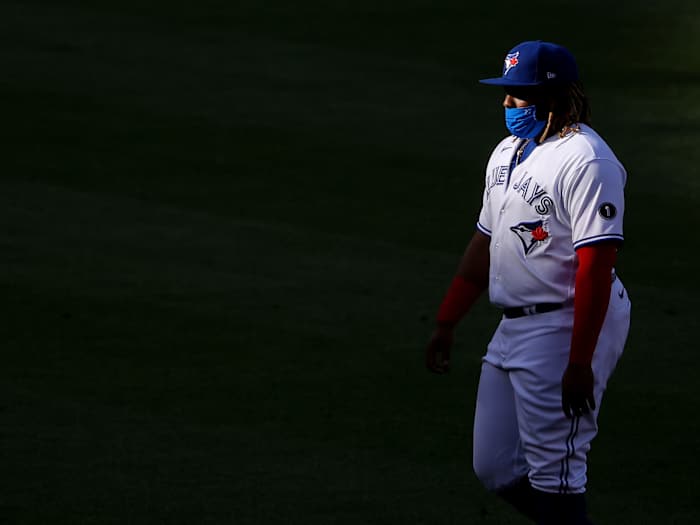What Does 'Home' Mean in MLB? The Blue Jays Are Finding Out
WASHINGTON, D.C. (BUFFALO?) (TORONTO??) — The Blue Jays’ 2020 home opener started just like any other. A solemn rendition of O Canada gave way to a dramatic hype video on the Jumbotron, welcomed with exuberant cheers from the crowd, and the team took the field.
It was all perfectly normal unless, of course, you widened the lens a bit. O Canada had been previously recorded. The crowd did not exist; their cheers, like all baseball cheers now, had originally been produced to serve as background noise in a video game. The Blue Jays were not in Toronto, or anywhere else in Canada. This was a “home opener” that did not take place at home and was not exactly an opener.
But “home” does not have to be interpreted literally—ask any greeting card that makes note of where your heart is—and this season will be a testament to that idea for the Blue Jays.
After the Canadian federal government denied them approval to play in Toronto on July 18, the team scrambled to find a solution, opting against some (Florida) and getting denied from others (Pittsburgh). They finally settled on their Triple-A stadium in Buffalo, which had previously been dismissed because of its poor lighting and lack of resources. (Outfielder Randal Grichuk described it as the “worst-case” scenario just a few days before it was chosen.) But Buffalo’s ballpark could not be upgraded in time for their first series at home, which meant the club's first few “home” games would have to be played on the road, beginning with Wednesday’s against the Nationals. Which left them trying to answer a question that has otherwise had little place in modern baseball: How do you stage a home game away from home?
It’s impossible to work around. “Home” means too much in baseball; it’s woven into the fabric of the whole endeavor. It’s rooted in the attachment to the idea that each park should be physically unique—”home” as not simply a place to play but as a place to shape that play—and stretches out from there. It’s who bats first. It’s the structure for a competitive advantage in extra innings. Home is not a location in baseball so much as it is an entire framework. And, of course, it’s the obvious stuff that fits in any other sport, too—who cheers, and when, and how loudly.
The pandemic has prompted every club to make up that last part on its own. All MLB clubs are, in a sense, now trying to figure out how to reconstruct the idea of how to play at home. It's just that the Blue Jays have to take that reconstruction much further.
At Nationals Park on Wednesday, it looked like this: After O Canada and the hype video, Toronto’s lineup was given the home-team treatment, vowels stretched out and consonants enunciated with relish over the P.A. system. The Jays had walk-up music and miniature hype videos for each plate appearance, peppered with the sort of details that extend some measure of intimacy to fans, little in-jokes and callbacks. (Outfielder Derek Fisher’s video included not only a clip of a home run from last year, but the dugout celebration with Vlad Guerrero, Jr. adoringly rubbing Fisher’s bald head, for instance.) The artificial crowd noise was triggered exclusively for the Jays—with cheers for almost every at-bat, no matter the context, a perfectly uniform and unflagging show of manufactured support. And, naturally, the seventh-inning stretch featured “OK Blue Jays.”
It was a very thoughtfully constructed approximation of a home game. Which—no matter how total its commitment to the act—is unfortunately still not a home game.
It was jarring to see, for example, Nationals starter Max Scherzer yanked in the eighth with two on and one out—out after an excellent show in the ballpark that he’s dominated for years, a tense situation that would typically have the scoreboard ask fans to make some noise, or, in this fan-less season, at least play a few highlights with pump-up music. Here, though, the scoreboard instead showed only the Blue Jays logo, gently pulsing like an enormous screensaver image, underneath the header NATIONALS PARK.
And for each pinprick of weirdness like this was a heavier pang, a bleak reminder of why any of this was necessary to begin with: There’s no amount of quirky detail that can positively spin a professional sports team ejected from their home country by a federal government who could not in good conscience allow them to play in a pandemic. The Blue Jays’ situation is an affront to the league’s constructs of both safety and competitive integrity. (If this was unsafe for Toronto, how is it deemed safe for Cleveland and Boston and Atlanta? And even if it’s safe, how is it possibly fair?) There’s no creative touch that can override that.
The dedication to the bit held to the end. When the Nationals won, 4-0 in extras, they left their home field not to a soundtrack of celebration but to Frank Sinatra’s “When You’re Smiling”: But when you’re crying / you bring on the rain / So stop your sighing, be happy again.
The Blue Jays will try to do so tomorrow.



































